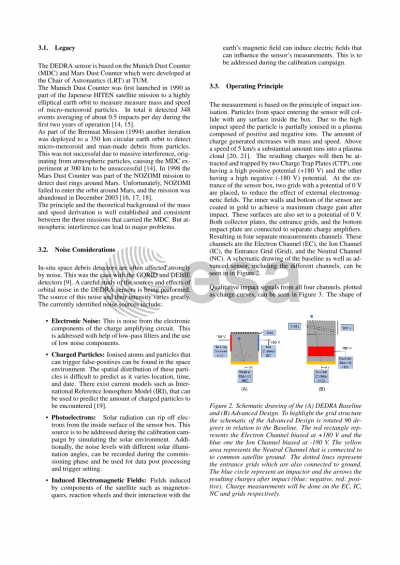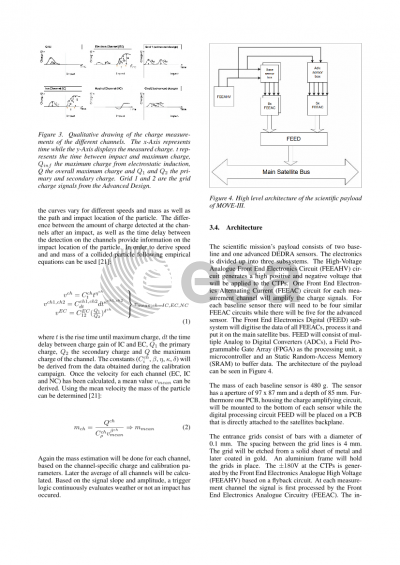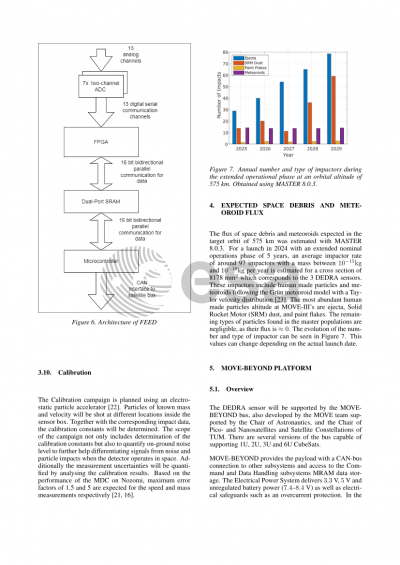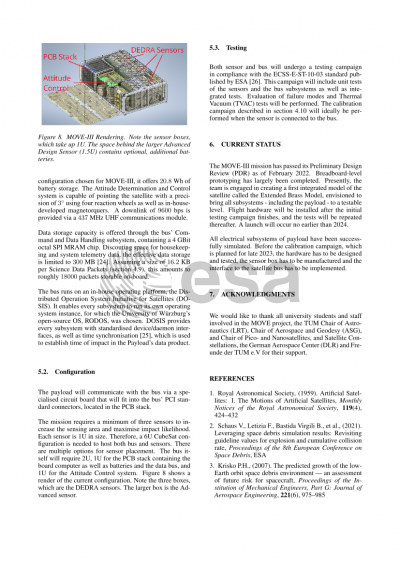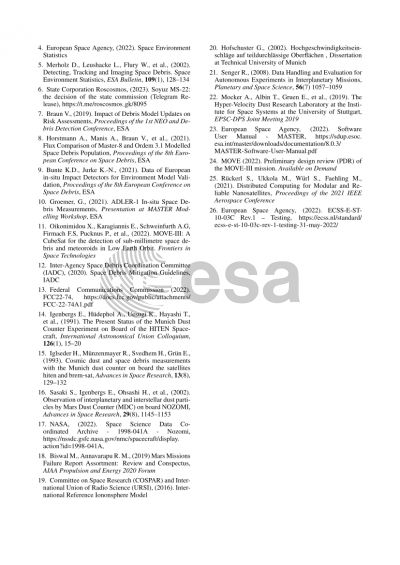Document details

Abstract
Over 60 years ago, the first artificial satellite, Sputnik-I, was launched into Low Earth Orbit (LEO). This event marked the beginning of the space era. Even if the orbit of Sputnik-I decayed rapidly, for most satellites this has been the exception rather than the norm. The growth of space debris has since then accelerated and currently, at the dawn of the “new space” era, a reduction seems highly unlikely. Space debris poses a threat for spaceflight. Thus a thorough characterisation of the space environment is crucial for a safe and sustainable use of space.
The Munich Orbital Verification Experiment III (MOVE-III) is a 6U CubeSat under development at the Scientific Workgroup for Rocketry and Spaceflight (WARR) of the Technical University of Munich (TUM). Equipped with three DEbris Density Retrieval Analysis (DEDRA) plasma ionization sensors (two baseline and one advanced sensor) the mission aims at acquiring in-situ observations of sub-millimetre space debris and meteoroids in LEO, with the objective of compiling a dataset of flux, as well as object mass and velocity measurements that can be used for the validation of the small object estimates of space debris models such as ESA’s Meteoroid and Space debris Terrestrial Environment Reference (MASTER) and NASA’s Orbital Design Engineering Model (ORDEM).
The mission’s scientific payload, the DEDRA sensors, is based on the Munich Dust Counter (MDC) which was previously flown in the early 90s. The baseline sensor is a gold plated aluminium box with an entrance grid and dimensions of ≈1U. On two opposing side walls, charge collection plates are mounted. These are biased with +180V and -180V. Particles that hit the inside of the box get partially ionised. The resulting charges are attracted and measured by the two charge collection plates. Additional measurements are performed on the entrance grid, and the remaining inside surfaces, where remaining charges are measured by the neutral channel. The resulting charge curves for each channel are characteristic for a certain mass-speed combination. During the calibration campaign particles with known mass and speed will be shot at the sensor. The resulting data will be used to determine the relationship between the charge curve and the mass-speed combination. In addition to this, noise levels and appropriate reduction procedures will be studied. Data processing and filtering is to be performed in situ by the satellite bus.
The MOVE-III mission will also feature the Advanced-DEDRA design. This design utilises four entrance grids to determine the direction of the impactor. Two grids lay flat while the remaining two are tilted and parallel to each other. Mass and speed are determined in the same manner as the baseline sensor. In addition to this, incoming particles induce a small charge gain on the grids. With these charge curves and the measured speed, the impact direction can be calculated.
Currently the project has completed the Preliminary Design Review phase and the first prototypes will be constructed, calibrated, and tested during early 2023. A mission launch is expected no earlier than the last quarter of 2024.
Preview


